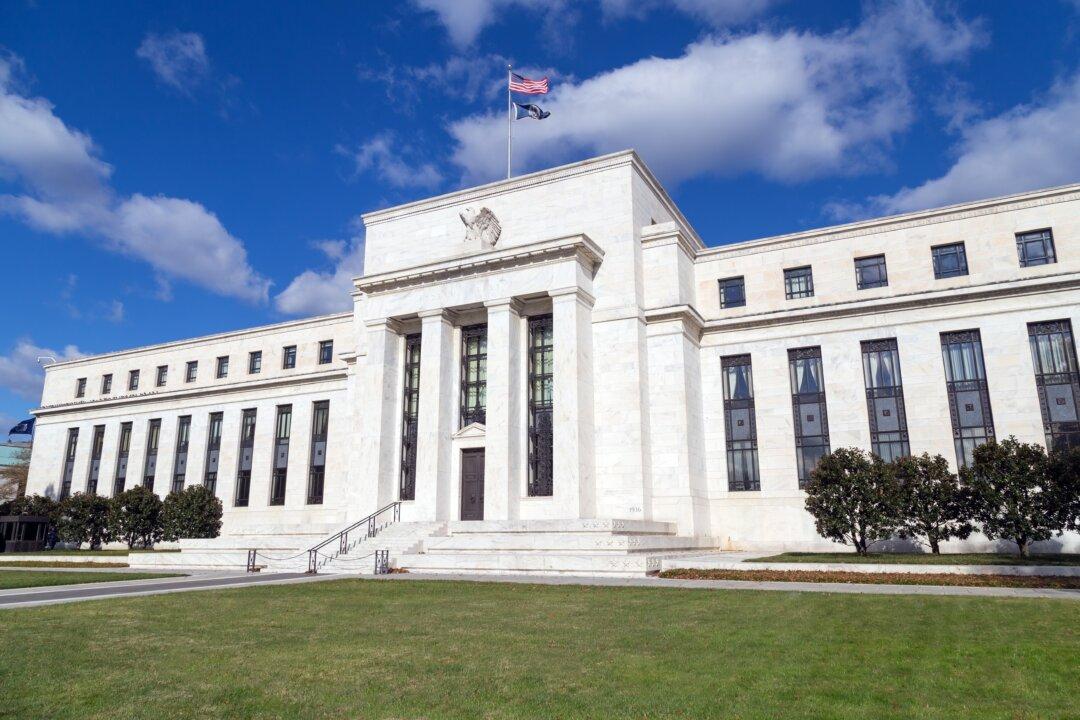The existence of the Federal Reserve is a serious national problem. It’s funding uncontrolled debt expansion. It enables the global military empire and war. It tempts every politician and bureaucrat to believe that there are no limits. It creates the illusion that anything else is possible for both government and the big corporate empires with which it’s linked. It’s the funding source of almost every problem that vexes our national life.
Most Americans would like to have constitutional government return, but every right we’re supposed to have is trampled upon daily. What enables this is a central bank that knows no limits to its power. Lockdowns are the best example: They would have ended in a few weeks but for the Fed’s accommodation of congressional largesse to the states.
What’s worse, it keeps making a mess of the goals it claims to have. Its policies are supposed to follow the famous dual mandate of maximum employment and price stability. This mandate is largely a leftover from the 1930s, a time when the Fed made a massive mess by failing on both fronts. They swore they would never make that mistake again.
Going back further in time, what precisely was the point of the Fed that was founded in 1913? It was to bring stability to the banking system, which had been vexed by decades of regional upheavals stemming from “wildcat” banking systems. Land speculators would leverage themselves thanks to unscrupulous financiers and face a liquidity crisis when the schemes didn’t pan out. This harmed regulator depositors and created disruptions in productivity.
The Fed promised to bring rationality, stability, and sound money. The trouble is that in order to receive a grant for its existence, it also had to swear fealty to government and its policy goals. The first order of business wasn’t sound money but rather world war. That had to be paid for, and the Fed did its duty. Paying off the war debt meant expanding money and credit, creating a boom-bust cycle in 1923 and another round that led to the Great Depression and another war.
It’s been this way for 110 years, with devastating results for the purchasing power of the dollar that the Fed was supposed to protect. The 1913 dollar is today worth 3 pennies. That’s a terrible record.
![(Data: Federal Reserve Economic Data [FRED], St. Louis Fed; Chart: Jeffrey A. Tucker)](/_next/image?url=https%3A%2F%2Fimg.theepochtimes.com%2Fassets%2Fuploads%2F2023%2F06%2F26%2Fid5356878-1_JAT_2023.06.26-1200x926.png&w=1200&q=75)
The solution to the Fed problem—abolish it completely—isn’t as obvious as it seems. There was a time when the dollar was another name for a weight of gold, backed by the government that issued it. Those times are long gone. Suspension after suspension finally led to a fully paper-money system starting in 1971. The limits were gone completely.
Restoration of a dollar convertible to gold both domestically and internationally faces a major problem with the transition, in addition to the enforcement of it. If the dollar were merely defined as, for example, 1/2,000th ounce of gold (roughly today’s gold price), the authenticity of the claim would be tested all over the world and immediately. This would prompt an immediate repatriation of dollars and a flight out for whatever amount of gold the government currently owns. It’s hard to say for sure, but my guess is that this experiment would be over as soon as it began.
Vivek Ramaswamy is an entrepreneur who has declared himself a candidate for the Republican nomination. One of his specialties is monetary policy. He has strong views that are rooted in theory and experience, and he can talk about the topic with a level of knowledge that far exceeds others in the race.
First, he would completely end the dual mandate by executive order. He would appoint a new Fed chairman who agrees with the new principles. This seems correct to me. It no longer makes sense, if it ever did, to govern monetary policy by looking at gigantic and hugely inaccurate data on employment. Right now, unemployment is ridiculously low, but this is largely because of a devastating labor shortage, fueled by the end of talented immigration, a low birth rate, and widespread dropouts. Labor participation is lower now than before pandemic controls.
The key issue is: How can the Fed solve any of these labor issues? It can’t. It should have nothing to do with Fed policy at all. As Vivek points out, the “dual mandate” is rooted in a crazy fallacy left over from bad economic theorizing from decades ago. The idea is called the Phillips curve, and it’s too boring to explain here. Suffice it to say that nothing about today’s reality conforms to its theoretical postulates. Vivek would repeal this mandate completely.
This is a fantastic idea.
That would leave the Fed with one goal: price stability. Vivek prefers to say: protect the soundness of the currency. That’s what the Fed was supposed to do at its inception. The single mandate would restore that idea to the very center of the Fed’s action.
This takes us to the second part of his plan. He would define a basket of commodities in which gold and silver would take center stage but probably would include many others. The purpose of this basket would be to provide a proxy for general price pressure. The sole goal of the Fed would be to stabilize this basket in terms of price. It would buy dollars to reduce inflation and sell them to guard against deflation. That would, in effect, mean redefining the U.S. currency as a basket of commodities—not directly convertible, of course, but as a policy goal.
Before examining this, let’s go to the third part: He would end all manipulation of interest rates. This would be a tremendous blessing. For decades now, the Fed has used the interest rate that it controls most directly (lending to banks) as a tool to manipulate the entire yield curve and game up the macroeconomic environment. This is how the Fed manages the whole of monetary policy. It isn’t working. Indeed, it’s been a disaster.
Even now, the Fed is using the interest rate to control inflation. It isn’t really working well, but it’s massively driving up borrowing costs and creating recessionary conditions. It’s true that driving down economic growth is one path to lowering inflation, but there are better ways. The best way is never to let inflation get out of control again, and that means limiting or abolishing the ability of the Fed to play such elaborate games with interest rates.
In my view, the first and third parts of this agenda should be achieved immediately and can be with the right leadership from the White House. As for the idea of tying the dollar to a commodity basket, there are problems here. Constructing the basket itself will be art and not science. There’s no perfect path for weighing out the commodities for an accurate picture of price pressure. Chasing around a statistical artifact like this could land the Fed in the weird position of a nonstop goose chase in which the goose is always outsmarting the person trying to catch it!
Plus, this plan would put the Fed in the position of battling deflation as well as inflation. This is a big mistake. From what we know from empirical experience, gently falling prices is a feature of the free market experience. Look at what happened to the price of computer electronics between 2006 and today: They’re down by 75 percent! That has hardly hurt the industry. It’s what progress looks like.
Also, between 1880 and 1890, while on a classic gold standard, prices in the United States declined overall by about 5.8 percent. Prices for food and beverages decreased by about 10 percent. Again, this wasn’t harmful. We really need to make our peace with deflation.
Another major failing of this plan is the supposition that the only effect of money supply changes is to change the value of the money. That isn’t true. Another major feature of money expansion is to disrupt production structures, as has been so perfectly illustrated by the experience since the zero-interest-rate policies of 2008.
All that said, Vivek’s plan does seem like a step in the right direction. My preference would be for a full denationalization of money, untying it from the government entirely, but that’s hardly realistic right now. Vivek has at least put a lot of thought into this subject. His views are certainly worth a listen and careful consideration. This needs to happen before we find ourselves embroiled in the worst-possible scenario of a Central Bank Digital Currency.







